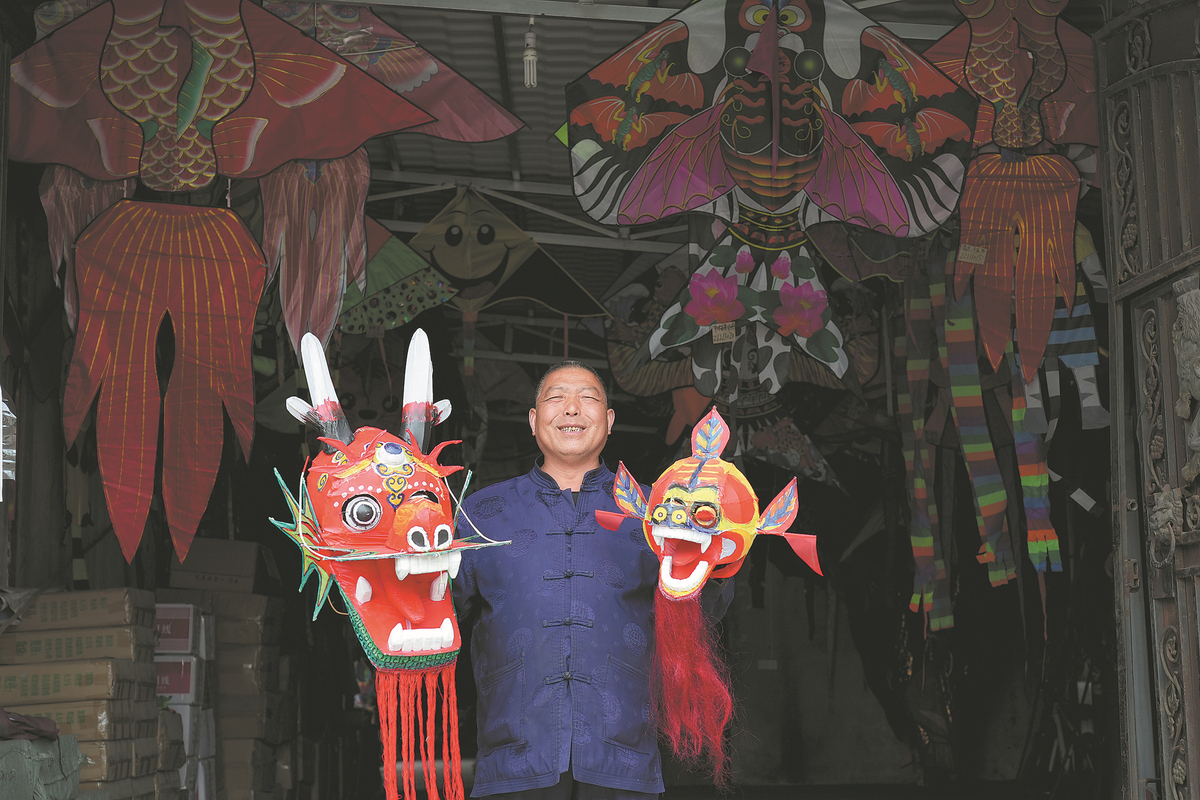Kites bring delight to inheritor


Gao Jiahui, who hails from a family of kitemakers, is delighted that he has been able to transform his cultural heritage into a successful international business, having sold more than 10,000 kites overseas so far this year.
"My kites are sold in countries such as Vietnam, Myanmar, Singapore and Malaysia," he said.
Gao, 61, was born into a kitemaking family in Jinji township in Chongzhou city, Sichuan province. He is the fifth-generation inheritor of the traditional Jinji kitemaking technique, a provincial intangible cultural heritage.
Jinji township is renowned as the "hometown of kites", where kitemaking dates back over 300 years. It is one of the largest kitemaking bases in China.
"Jinji kites are mainly in red, yellow, green and black, and commonly feature designs such as goldfish, swallows and Chinese dragons. They are all handmade," Gao said.
Growing up surrounded by colorful kites of different shapes and sizes, Gao began learning kitemaking from his father at age 15. After practicing the craft for seven years, he set up his own factory in his backyard.
With his exquisite craftsmanship, Gao soon became a major player in the local kite industry. At his peak, he employed as many as 1,000 people in his home village of Shuilu to make kites.
"We would use hundreds of kilograms of bamboo to make frames every day, and about 100 people were solely responsible for bamboo processing. There was also a large pot that kept boiling, to turn the flour into a paste," he said.
During kite season, which occurs around Chinese New Year, trucks from several southwestern provinces line up to load up kites made in the village. The annual sales revenue earned by Gao's factory ranges from 3 million to 4 million yuan ($415,000 to $553,000).
To meet market demand, Gao has been improving and innovating his kite designs over the years. In 1983, he developed a three-dimensional "frame kite". In 2005, he invented a "triangular kite", which is still popular today.
His factory now produces more than 170 kinds of kites.
"The smallest kite we make is only 10 centimeters long, while the largest can be over 100 meters long," Gao said, pointing to a Chinese dragon-shaped kite hanging on the wall.
"It's 100 meters long with 108 dragon scales on its body, and each scale has a chicken feather at the end, making it look quite imposing when it flies," he said, adding that he had recently flown the kite at an international kite competition held in Chongzhou and won an award.
The materials Gao uses for kitemaking have constantly changed over the past four decades.
"In the early days, we used asbestos paper, then we switched to oil paper and plastic. Today, the most commonly used material is non-woven fabric, which is wind-resistant, durable under sunlight and easy to color," he said.
Kite structures have also been optimized for assembly and folding, making them easy to transport and carry.
"Despite all these changes, we won't abandon our traditional technique," Gao said.
In fact, he said he has taught more than 30 apprentices the traditional Jinji kitemaking technique.
"The greatest joy of kites lies in making them," said Gao, adding that he hopes to pass on the craft to future generations.
With the local government's support, he has been regularly visiting several primary and secondary schools over the past four years to teach the students how to make Jinji kites.
Meanwhile, some communities in Chengdu, the provincial capital, and even organizations from other provinces have invited him to give lectures and conduct training courses on kitemaking.
"All my life, I only want to focus on one thing, and that is to pass on the tradition of the Jinji kite. This is my mission," he said.
To further his goal, Gao established a local kite association last month.
"By making full use of the association, I hope to better promote the traditional Jinji kitemaking technique and contribute to rural vitalization by boosting local tourism and economic development," he said.




